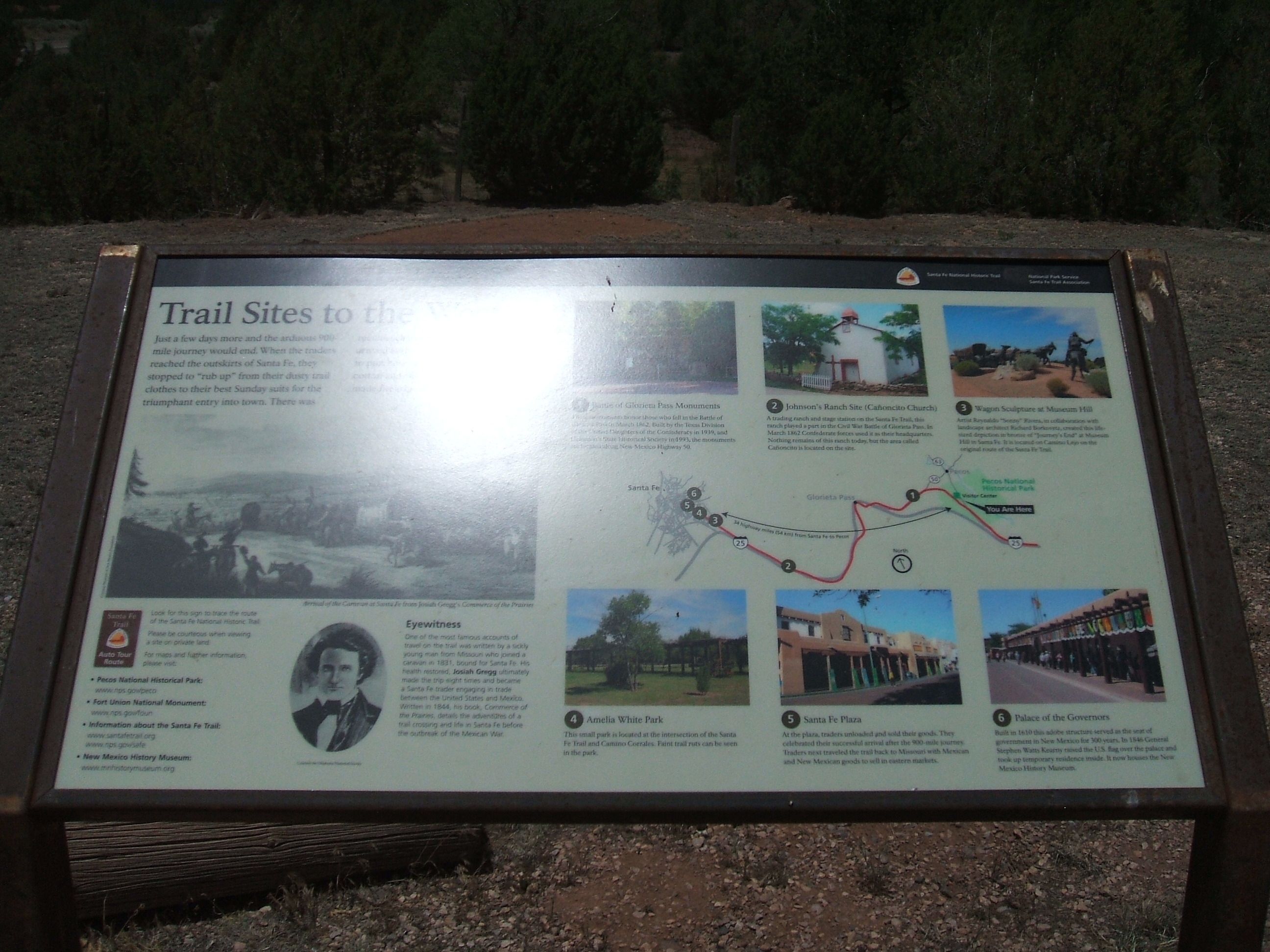Photograph as originally submitted to
this page in the Historical Marker Database
www.HMdb.org.
Click on photo to resize in browser. Scroll down to see metadata.
Photographer: Chris English
Taken: June 10, 2013
Caption:
Santa Fe Trail Interpretive Material | Additional Description:
Interpretive material from
north side of the parking lot.
Trail Sites to the West
Eyewitness - One of the most famous accounts of travel on the trail was written by a sickly young man from Missouri who joined a caravan in 1831, bound for Santa Fe. His health restored, Josiah Gregg ultimately made the trip eight times and became a Santa Fe trader engaging in trade between the United States and Mexico. Written in 1844, his book, Commerce of the Prairies, details the adventures of a trail crossing and life in Santa Fe before the outbreak of the Mexican War.
1. Battle of Glorieta Pass Monuments - These monuments honor those who fell in the Battle of Glorieta Pass in March, 1862. Built by the Texas Division of the United Daughters of the Confederacy in 1934 and State Historical Society in 1993, the monuments are located along New Mexico Highway 50.
2. Johnson's Ranch Site (Caņoncito Church) - A trading ranch and stage station on the Santa Fe Trail this ranch played a part in the CIvil War Battle of Glorieta Pass. In MArch 1862 Confederate forces used it as their headquarters. Nothing remains of this ranch today but the area called Caņoncito is located on the site.
3. Wagon Sculpture at Museum Hill - Artist Reynaldo "Sonny" Rivera, in collaboration with landscape architect Richard Borkovetz, created this life sized depiction in bronze of "Journey's End" at Museum Hill in Santa Fe. It is located on Camino Lejo on the original route of the Santa Fe Trail.
4. Amelia White Park - This small park is located at the intersection of the Santa Fe Trail and Camino Corrales. Faint trail ruts can be seen in the park.
5. Santa Fe Plaza - At the plaza, traders unloaded and sold their goods. They celebrated their successful arrival after the 900-mile journey. Traders next traveled the trail back to Missouri with Mexican and New Mexican good to sell in eastern markets.
6. The Palace of the Governors - Built in 1610, this adobe structure served as the seat of government in New Mexico for 300 years. In 1846 General Stephen Watts Kearney raised the U.S. flag over the place and set up temporary residence inside. It now houses the New Mexico History Museum.
Submitted: July 2, 2013, by Chris English of Phoenix, Arizona.
Database Locator Identification Number: p246221
File Size: 1.211 Megabytes
To see the metadata that may be embedded in this photo, sign in and then return to this page.
